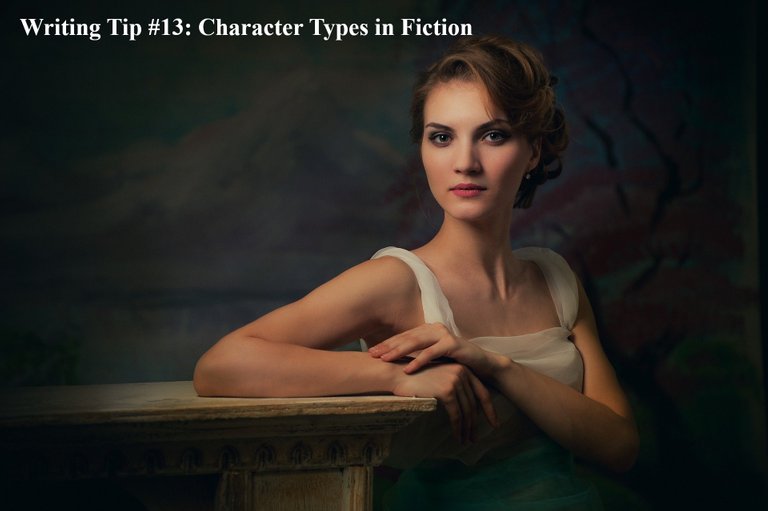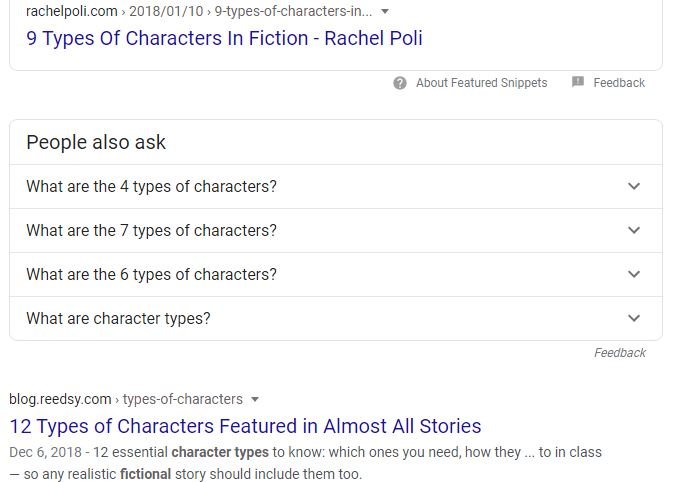
Image source: AlexKlen on Pixabay, modified using GIMP
There are several known character types in fiction. These well-established types have appeared throughout the history of literature.
Note: We aren’t talking about character traits, such as a domineering or meek nature. We’ll cover traits in another article. This article is about the distinct character types in terms of their function in a story.
The reason for identifying and understanding character types in fiction is because they make a story work. Creating characters knowing the key roles they play in the story can truly help you to hone in on why they are there, and how they can help to drive the story forward or provide depth, richness and credibility.
A perusal of character types
There are some great resources out there for learning about character types, so I’m not going to provide an exhaustive review here. We’ll just look at the primary types and some examples, and then I’ll provide resources for further exploration.
The amusing thing is that if you do an Internet search for “character types in fiction,” you will see something like this:
So, in other words, there are different ways of looking at the character types you will see in literature, and teachers and authorities on fiction are not all in agreement on what constitutes a character type. Let’s look at 5 of main character types that are typically defined in writing guides:
- Protagonist: This is your main character. It is the person who will be most developed, and the person we will most identify with as the story unfolds. Your protagonist must be the one who demonstrates a driving force of some kind (such as a burning desire or a fear) so that the roadblocks that prevent the desire from being fulfilled, or the fear abated, create your story’s conflict.
- Antagonist: This is the “bad guy,” essentially, also known as the “villain.” But it’s important to know that not all antagonists are truly bad. For example, if your protagonist is a young teenager who wants to slip out of his room at night to go see his girlfriend, and just then his mother steps into his room and thwarts his plans, she is acting in the role of antagonist even though she could be a perfectly lovely person. At the far end of that spectrum, you have Voldemort. So, antagonists can be true villains, but not always. Regardless, they play a critical role in helping to create the conflict and build the story’s tension.
- Love interest: This character type needs little introduction. Every “boy meets girl” story or “the boy next door” story has a love interest. This person is typically the protagonist’s object of desire, and helps to create the story’s conflict. Though this hardly needs to be said, not all stories have a love interest.
- Confidant: In many great stories, the main character does not stand alone. The story may start out that way, but at some point another character enters the picture as the best friend or side-kick of the protagonist. One of my favorite examples is Boris in the book The Goldfinch, by Donna Tartt. Boris is far more than a minor character in the story. He is brave, funny and resilient, which are traits our dear damaged protagonist, Theo Decker, does not possess. And though in some ways Boris also plays the role of antagonist, he is one of the most dear and charming confidants in literature, in my humble opinion. (And I cannot recommend the book highly enough!)
- Foil: A story’s foil is the protagonist’s opposite, and will typically clash badly with the protagonist, at least for a while. Sometimes the foil eventually becomes the best friend or the love interest. So it’s important to know that character types can be fluid. We’ll likely dive deeper into foil characters in a future post, because they are so fun and interesting, and it’s worthwhile to learn the technique of developing them. But one quick example, as this article on foil characters in The Art of Narrative blog shares, is Woody and Buzz from Toy Story. Buzz is a perfect foil to Woody because his appearance, mannerisms and sensibilities are completely opposite of the smart, wily and slightly cynical Woody, and he causes Woody considerable irritation, until they ultimately become good friends.
There are others types as well. But I think that is enough to digest in one blog post. Most of us here are short story writers, so it’s important to take that into consideration. With a story that is typically somewhere between 500 and 5,000 words, you only have so much space for developing multiple character types.
To learn more about the known character types in fiction, see these resources:
- The Master Class: 7 Character Roles in Stories
- Rachel Poli: 8 Types of Characters in Fiction
- Reedsy: 12 Types of Characters Featured in Almost All Stories
Happy writing!
@jayna, writer and moderator at The Ink Well.

If you're looking to up your fiction game and reach that next level, check out my past writing tips linked below.

We would like to invite lovers of poetry and short stories to visit The Ink Well, a Hive community started by @raj808 and run by @shanibeer and @stormlight24 with support from moderators @carolkean and @jayna.
It is now possible to follow The Ink Well curation trail on Hive blockchain with Hive.Vote. Simply navigate to the curation trail section and search for theinkwell and our trail will pop up as an option.
If you wish to delegate to @theinkwell and support creative writing on Hive, you can do this from the wallet section in PeakD.



I didn't know about the foil or let's just say I didn't have a name for it.
Reading through your recommendations!
We are all learning! 😊
Our goal is to bring the classic storytelling and structure guidance here to The Ink Well, as many people have never had real schooling in the craft of writing. Our hope is that our writing community will learn and grow together, and we will see the collective skills improve with time.
Whether you're writing about a novel or an essay, there are some things you can do to make your essay more engaging. You can choose to focus on certain elements of the book, such as theme, setting, relationships, or the relationship between characters. You can also describe your own thoughts and feelings about the book. These are important because they can help readers get to know the book better. So check how to https://novels-now.net/ article.